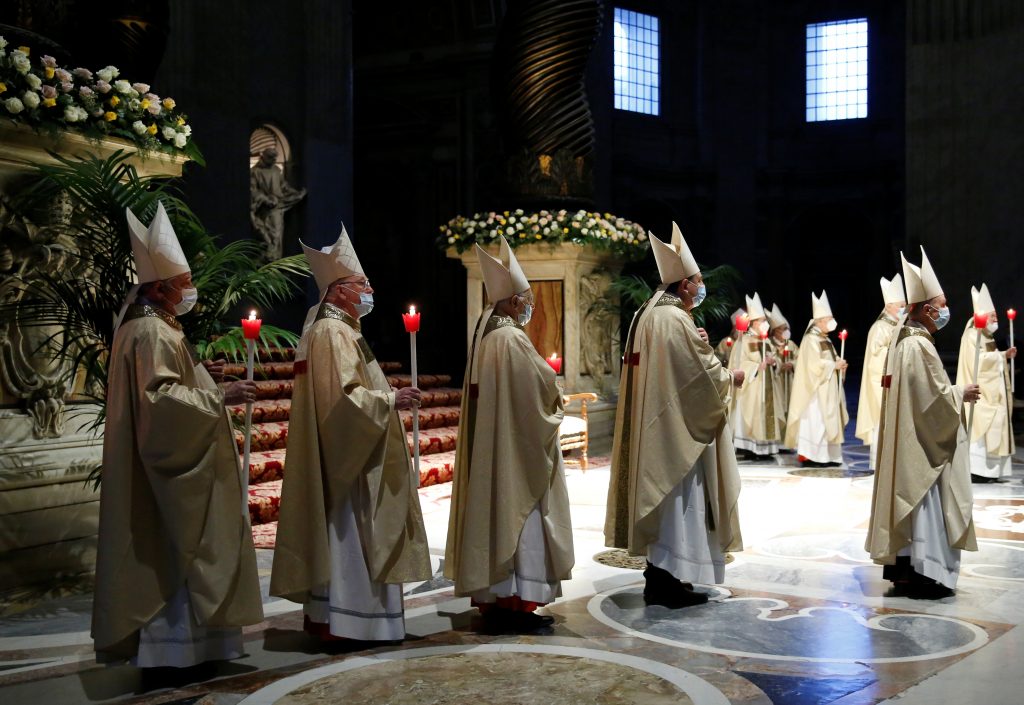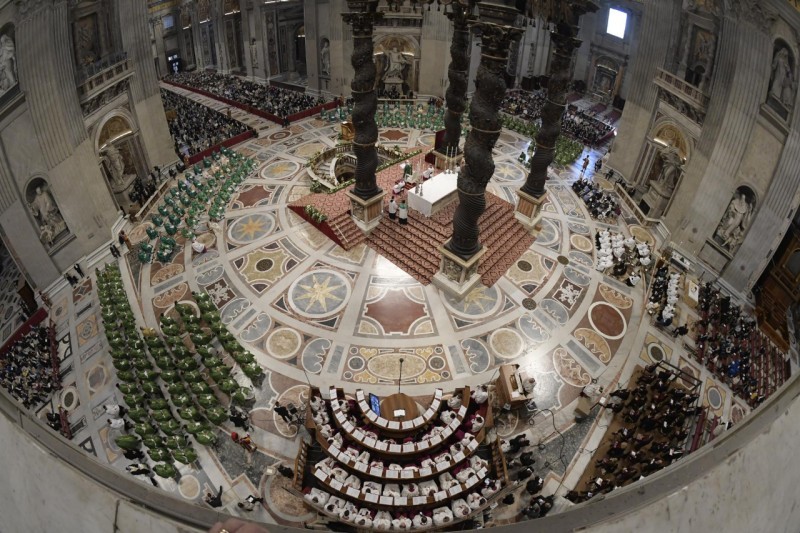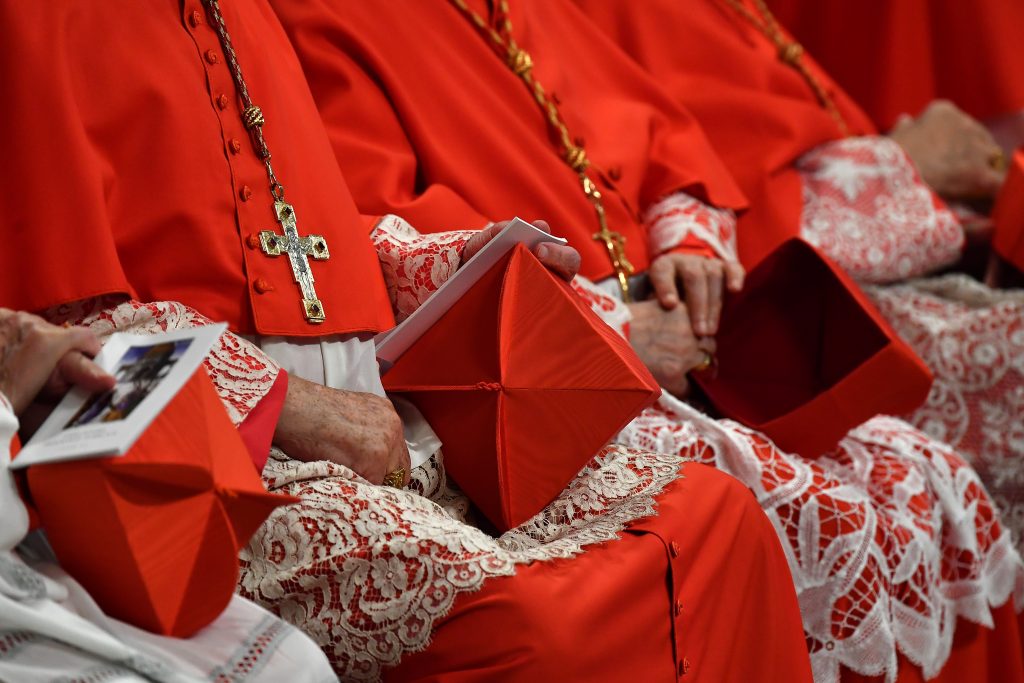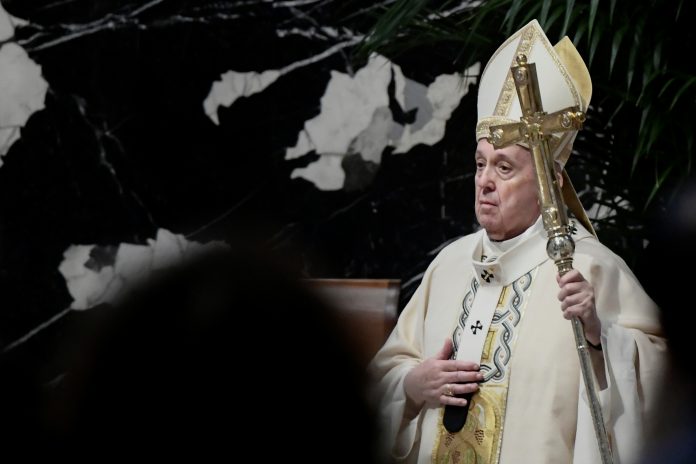The Vatican published on Saturday, March 19, a long-awaited document implementing Pope Francis’ reform of the organization and structure of the Roman Curia.
The apostolic constitution, Praedicate evangelium (“Preach the Gospel”), was released initially only in Italian on March 19 after nine years in production by the pope’s Council of Cardinal Advisers.
The constitution underlines that “any member of the faithful” can lead one of newly constituted Vatican dicasteries or other bodies, “given their particular competence, power of governance and function.”
Praedicate evangelium replaces Pastor bonus, the apostolic constitution on the Roman Curia promulgated by Pope John Paul II on June 28, 1988, and later modified by both popes Benedict and Francis.
With the publication of the new constitution, Pastor bonus is “fully abrogated and replaced.”
The constitution was issued on the Solemnity of St. Joseph, husband of the Blessed Virgin Mary, the ninth anniversary of the inauguration of Pope Francis’ pontificate. It will take full effect on June 5, the Solemnity of Pentecost.
No more congregations or pontifical councils
Under the new constitution, all the Vatican’s main departments are now known as “dicasteries.” The powerful Vatican Congregation for the Doctrine of the Faith, for example, will now be called the “Dicastery for the Doctrine of the Faith.”
Along with removing the title “congregation” from Vatican departments, the new constitution renames pontifical councils as “dicasteries.”
The constitution says: “The Roman Curia is composed of the Secretariat of State, the Dicasteries and other bodies, all juridically equal to each other.”
The 16 dicasteries are as follows:
- Dicastery for Evangelization
- Dicastery for the Doctrine of the Faith
- Dicastery for the Service of Charity
- Dicastery for the Eastern Churches
- Dicastery for Divine Worship and the Discipline of the Sacraments
- Dicastery for the Causes of Saints
- Dicastery for Bishops
- Dicastery for the Clergy
- Dicastery for Institutes of Consecrated Life and Societies of Apostolic Life
- Dicastery for the Laity, Family and Life
- Dicastery for Promoting Christian Unity
- Dicastery for Interreligious Dialogue
- Department for Culture and Education
- Dicastery for Promoting Integral Human Development
- Dicastery for Legislative Texts
- Dicastery for Communication
The document explains that “it became necessary to reduce the number of departments, joining together those whose purpose was very similar or complementary, and rationalize their functions with the aim of avoiding overlapping of competencies and making their work more effective.”
Evangelization at the center
In a significant change, the Pontifical Council for Promoting the New Evangelization and the Congregation for the Evangelization of Peoples are merged into the Dicastery for Evangelization, chaired directly by the pope.
The Dicastery for Evangelization is listed first among the dicasteries in the document, indicating its centrality in the new structure of the Roman Curia.
The dicastery will have two sections, one for “fundamental questions of evangelization in the world” and another “for the first evangelization and the new particular Churches in the territories of its competence.”
Each section will be governed in the pope’s name by a “pro-prefect.”

A Dicastery for the Doctrine of the Faith
The document confirms changes to the former Congregation for the Doctrine of the Faith unveiled by Pope Francis in February.
The pope reorganized the internal structure of the Vatican’s doctrine office into two sections: a doctrinal section and a disciplinary section.
Setting out the doctrinal section’s responsibilities, the new constitution says that it works in close contact with Church leaders around the world “in the exercise of their mission as authentic teachers and teachers of the faith, for which they are bound to safeguard and promote the integrity of that faith.”
The section “examines writings and opinions that appear contrary or harmful to the right faith and morals; it seeks dialogue with their authors and presents suitable remedies to be made, in accordance with its own norms.”
It also “endeavors to ensure that there is an adequate refutation of the dangerous errors and doctrines which are spread among the Christian people.”
Safeguarding change
The document explains that the Pontifical Commission for the Protection of Minors is “established within the Dicastery” for the Doctrine of the Faith.
“Its task is to provide the Roman Pontiff with advice and counsel and to propose the most appropriate initiatives for the protection of minors and vulnerable persons,” it says.
Cardinal Seán O’Malley, president of the pontifical commission, said: “For the first time, Pope Francis has made safeguarding and the protection of minors a fundamental part of the structure of the Church’s central government: the Roman Curia.”
“Linking the commission more closely with the work of the new Dicastery for the Doctrine of the Faith represents a significant move forward in upgrading the place and mandate of the commission which can only lead to a stronger culture of safeguarding throughout the Curia and the entire Church.”
“Maintaining its status as a separate body within the dicastery that enjoys direct access to the Holy Father and with its own leadership and staffing, the renewed and re-affirmed Pontifical Commission will play an increasingly incisive role in ensuring the Church is a safe place for children and vulnerable persons.”
O’Malley, the archbishop of Boston, is a member of the Council of Cardinal Advisers which advised the pope on the new constitution.
Emphasis on charity
The Office of Papal Charities, run by the papal almoner Cardinal Konrad Krajewski, becomes the new Dicastery for the Service of Charity.
According to Vatican News, the changes give the office “a more significant role in the Curia.”
Worship, liturgical books, and the extraordinary form
The constitution says that the newly named Dicastery for Divine Worship and the Discipline of the Sacraments is responsible for arranging “the drafting or revision and updating of the typical [original Latin] editions of liturgical books.”
“The dicastery confirms the translations of liturgical books into current languages and gives recognitio [formal recognition] to their appropriate adaptations to local cultures, legitimately approved by the bishops’ conferences,” it says.
It adds that “the dicastery deals with the regulation and discipline of the sacred liturgy as regards the extraordinary form of the Roman Rite.”
Pope Francis imposed tight restrictions on the celebration of extraordinary form Masses — also known as Traditional Latin Masses — in his July 2021 apostolic letter Traditionis custodes.

Other innovations
Regarding the body now known as the Dicastery for the Causes of Saints, the new constitution says: “It is for the Dicastery to judge the granting of the title of Doctor of the Church to a Saint, after having obtained the vote of the Dicastery for the Doctrine of the Faith concerning their eminent doctrine.”
The Pontifical Council for Culture and the Congregation for Catholic Education are united in the Dicastery for Culture and Education, which is divided into two sections.
Powers of the Secretariat of State
Early drafts of the constitution were said to have given wide powers to the already highly influential Vatican Secretariat of State. In the final version, the Secretariat of State is listed before the 16 dicasteries.
The published document says that the body, overseen by Vatican Secretary of State Cardinal Pietro Parolin, “closely assists the Roman Pontiff in the exercise of his supreme mission.”
It describes the tasks of the Secretariat’s three sections: the Section for General Affairs; the Section for Relations with States and International Organizations; and the Section for Diplomatic Personnel of the Holy See.
The first section has broad responsibilities, including “attending to the handling of affairs concerning the daily service of the Roman Pontiff,” coordinating the work of dicasteries “without prejudice to their autonomy,” drafting papal documents such as apostolic letters, and giving “indications to the Dicastery for Communication regarding official communications concerning both the acts of the Roman Pontiff and the activity of the Holy See.”
Goals of the reform
The goals of the reform are set out in a section of the new constitution called “Principles and criteria for the service of the Roman Curia.”
It sets out 11 guiding principles: “Service to the Pope’s mission,” “ Co-responsibility in the communio,” “Service to the mission of the Bishops,” “Support for the particular Churches and their Episcopal Conferences and Eastern hierarchical structures,” “The vicarious nature of the Roman Curia,” “Spirituality,” “Personal integrity and professionalism,” “Collaboration between the Dicasteries,” “Interdicasterial and intradicasterial meetings,” “Expression of catholicity,” and “Reduction of Dicasteries.”
As well as defining the competencies of the 16 dicasteries, the 54-page constitution outlines the role of other Vatican institutions, including judicial bodies such as the Apostolic Penitentiary, economic organizations such as Secretariat for the Economy, and other offices such as the Prefecture of the Papal Household.
It lists the duties of the Camerlengo of the Holy Roman Church, who oversees the functioning of the Vatican during a papal interregnum.
It also defines the qualities expected of lawyers working for the Holy See, who are expected “to lead an integral and exemplary Christian life and to carry out the duties entrusted to them with the utmost conscience and for the good of the Church.”

A 9-year journey to publication
On his election in 2013, Pope Francis was widely seen as having a mandate to reform the Roman Curia. Over the first nine years of his pontificate, he issued decrees changing Vatican law and structures, which are reflected in the text of the new constitution.
The Council of Cardinals finished the first draft of the new constitution in 2018. The text was then circulated among the presidents of national bishops’ conferences, dicasteries of the Roman Curia, synods of the Eastern Churches, conferences of major superiors, and select pontifical universities for feedback in 2019.
The Council of Cardinals met in February 2020 for “an in-depth re-reading and revision” of the document.
Amid the coronavirus pandemic, the cardinals continued to review the text at virtual meetings with Pope Francis.
Seven cardinals currently serve on the Council of Cardinals, helped by secretary Bishop Marco Mellino: Honduran Cardinal Óscar Andrés Rodríguez Maradiaga, who acts as coordinator; Vatican Secretary of State Cardinal Pietro Parolin; Cardinal Giuseppe Bertello, president of the Pontifical Commission for the Vatican City State; Indian Cardinal Oswald Gracias of Bombay; German Cardinal Reinhard Marx of Munich and Freising; U.S. Cardinal Seán O’Malley of Boston; and Congolese Cardinal Fridolin Ambongo Besungu of Kinshasa.
In January 2021, Parolin said that “considerable progress” had already been made in the pope’s reform of the Roman Curia, particularly with regard to Vatican finances, pointing to the creation of the Council for the Economy, the Secretariat for the Economy, and the Office of the Revisor General.
He added that further reforms could include the merger of the Congregation for the Evangelization of Peoples with the Pontifical Council for the New Evangelization and the combination of the Congregation for Catholic Education with the Pontifical Council for Culture.
“But these are minor actions compared to what has already been done,” he said. “Now it is a question of giving homogeneity to all the reforms which have been made, by means of the new apostolic constitution.”
Formal unveiling
The Vatican will formally present the new constitution at a press conference on Monday, March 21.
Speakers will include Cardinal Marcello Semeraro, prefect of the Congregation for the Causes of Saints, Bishop Marco Mellino, secretary of the Council of Cardinals, and canon law expert Father Gianfranco Ghirlanda, S.J.
The new constitution recalls previous reforms of the Roman Curia in past centuries. It highlights reforms instituted in the 20th century by Pope Paul VI and Pope John Paul II.
It says: “In continuity with these two recent reforms and with gratitude for the generous and competent service that over time so many members of the Curia have offered to the Roman Pontiff and to the universal Church, this new Apostolic Constitution proposes to better harmonize the current exercise of the Curia’s service with the path of evangelization that the Church, especially in this season, is living.”









